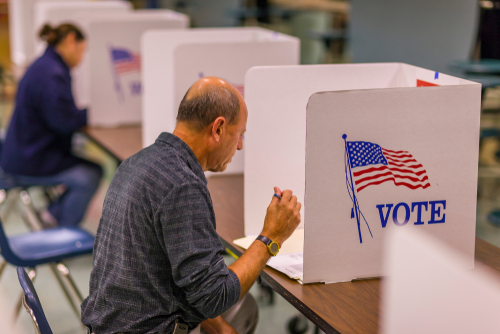
iWith federal funding declining, local option sales tax ballot initiatives may be the wave of the future for funding road projects, leaders in transportation funding said this month in a webinar.
Sponsored by the ENO Center for Transportation, the webinar “Ballots for Buses” looked at the history of Local Option Sales Tax (LOST) ballot initiatives and what characteristics seem to ensure they are passed.
Martin Wachs, founding director of the Institute of Transportation Studies at the University of California Transportation Center, said LOST initiatives are important because federal funding is decreasing.
“Congress has increased the federal gas tax eight times between 1956 and 1993,” he said. “And it has not increased it since then. It was 17 percent of the price of gas, but in 2017, it was 8 percent of the price of gas. This has slowed down the revenue we are able to capture from drivers.”
The current federal gas tax is 0.184 per gallon, he said, dropping the purchasing power of the gas tax 35 percent between 2003 and 2017.
One alternative to federal dollars, Wachs said, is putting a LOST before a communities’ voters.
In a study of LOSTs in California, in 2018 alone, of the 185 transportation measures put before voters, 142 were approved, and only 43 were defeated.
Successful LOST measures have several things in common, he said.
First, they spread the money raised by the tax around each county, over various modes of transportation and over various lengths of time. By doing this, Wachs said, a county can appeal to several different voters and make sure each constituency gets some benefit from it.
Second, it is important to find a balance between capital projects and operation costs, he said. The goal of the LOST should be to promise relief on many different interests.
Third, the tax should have an end date that puts voters in charge of whether or not it’s renewed.
And lastly, the LOST should have built into its accountability and flexibility, with limitations. The measure should have annual audits, citizen oversight, and clear rules regarding what happens when officials want to change something. While it should have flexibility, it should also require multiple approvals to change what money raised is being spent on, and a limit to the number of changes that can be made. There should also be ways for municipalities to veto changes and for decisions to be appealed.
Issues that pass aren’t necessarily ones that pass on the first try, he said.
“These initiatives don’t pass just because they are popular,” he said. “Public officials have learned how to get these measures passed.”
The first lesson they have learned, he said, was not to give up.
Early measures in Riverside, Orange, and San Diego counties in California, he said, were initially not passed because of concerns by environmentalists that the projects would disrupt habitats and negatively impact the environment. When subsequent measures were put on the ballot, they included money to acquire land that would mitigate transportation impacts on the environment, under the Endangered Species Act.
Jeremy Marks, Master of Urban and Regional Planning, UCLA Institute of Transportation Studies, said a database had been created to provide planners with access to all of the LOST measures put before voters in California. The database includes whether the measure was approved or defeated, what was included in the measure, how long it lasted, and other crucial information.
Free to download, the database is for anyone who wants to look at how to successfully craft a lost, Marks said.
Marks said that many communities relying on LOSTs have seen revenue declines because of the COVID-19 pandemic.
“County with active LOST measures recorded massive losses over the first quarter,” he said. “And In the second quarter, most reported a smaller decline looking at year over year revenues. But right now, we are seeing that revenue rebound because of stimulus funding.”